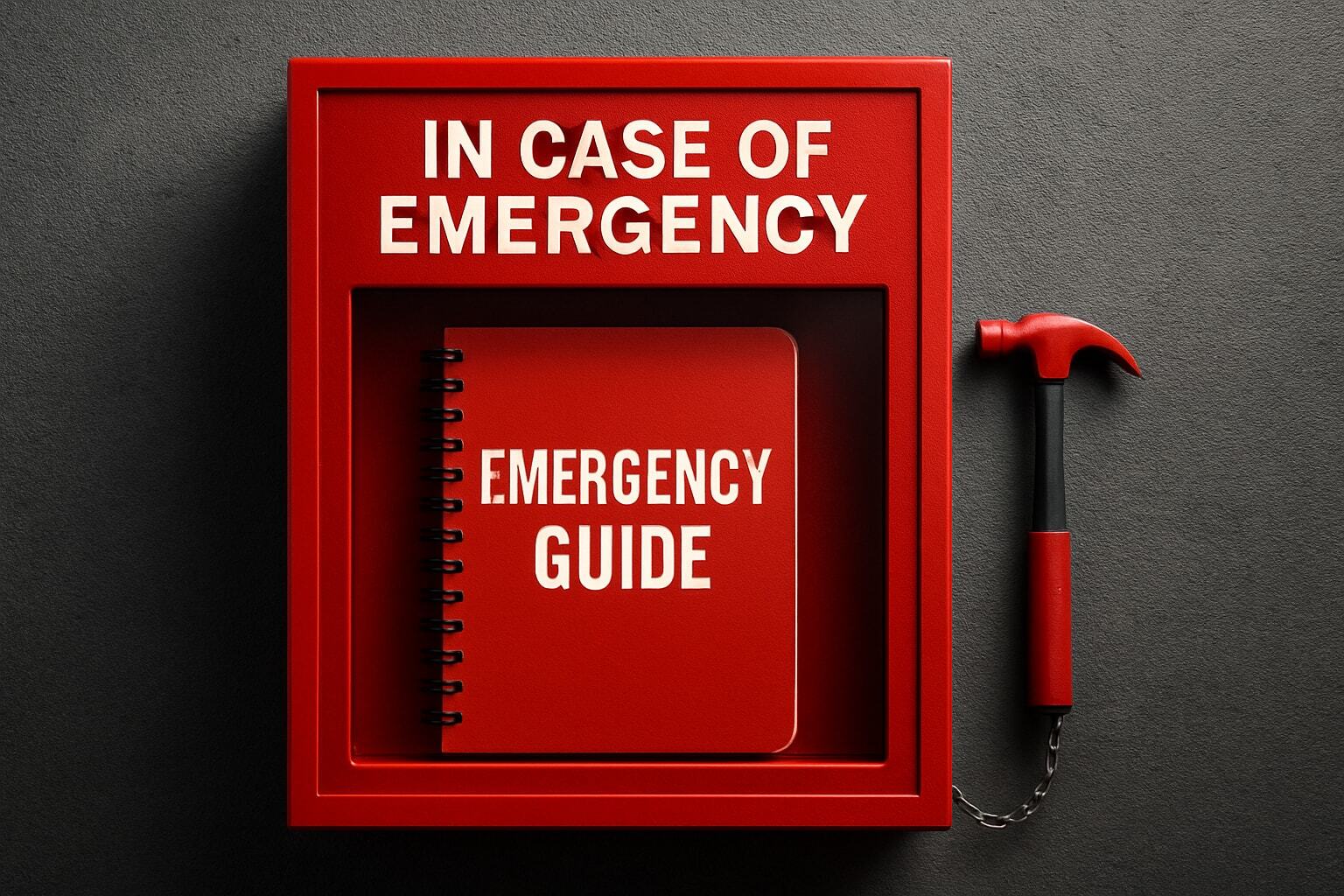In Case of Emergency Guide: Essential Steps for 2025
Imagine a moment when disaster strikes—would you know exactly what steps to take in case of emergency? In today's fast-changing world, being prepared is more vital than ever. This guide delivers the most current, practical steps you need for 2025, helping you protect yourself and those you care about.
You will discover why emergency preparedness is crucial, how to assess your risks, and the best strategies for building solid plans and supplies. Learn to use technology to your advantage and ensure your family is truly ready for anything.
Emergencies can happen at any time. Equip yourself with the knowledge and confidence to respond effectively, safeguard your loved ones, and achieve peace of mind.
The Importance of Emergency Preparedness in 2025
Emergencies are evolving rapidly, making preparedness more vital than ever. The landscape of threats is shifting, impacting how we respond and plan. Understanding why being ready matters can help you and your family stay resilient in case of emergency.
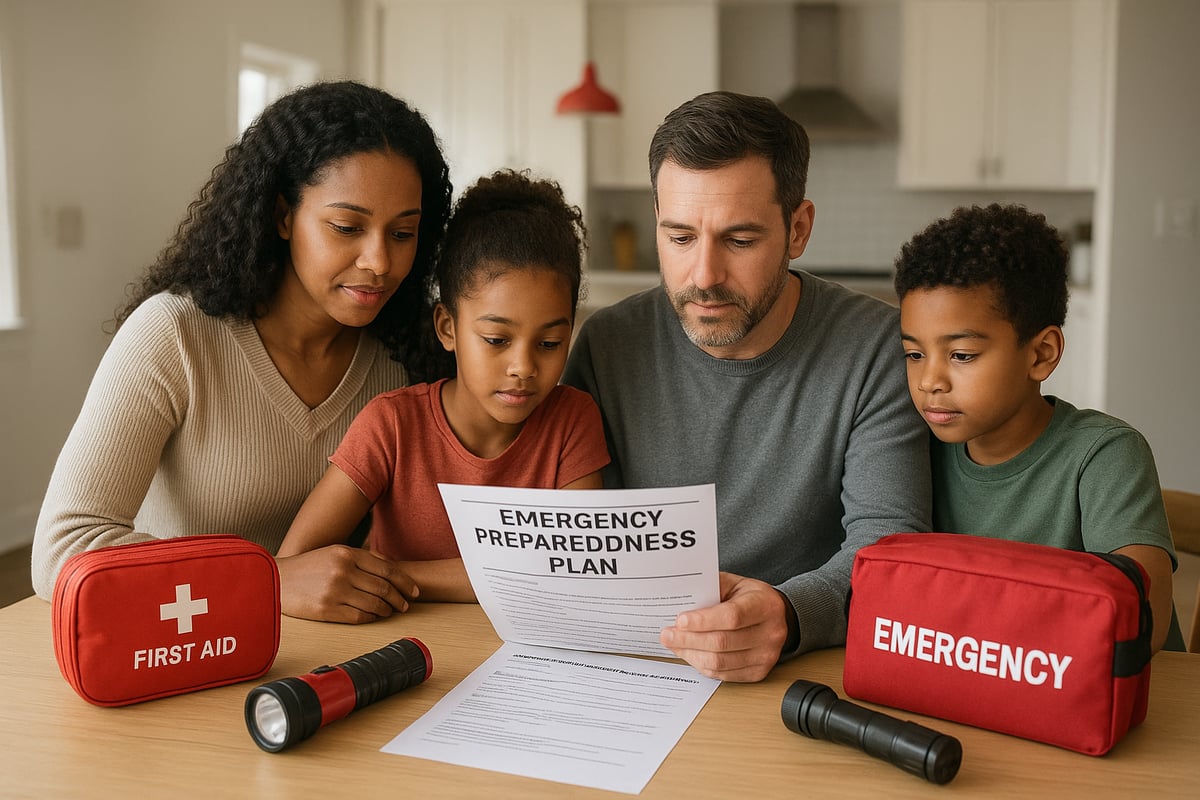
Understanding Modern Threats and Risks
The types of emergencies we face today are more complex than ever before. Natural disasters like wildfires, hurricanes, and floods are becoming more frequent and severe due to climate change. At the same time, digital threats—such as cyberattacks and data breaches—pose new risks to our safety and infrastructure.
For example, the 2023 wildfires and the intense 2024 hurricane season showed how quickly situations can escalate. Recent cyberattacks have disrupted vital services, highlighting our reliance on technology. According to FEMA, there has been a 25% increase in declared disasters over the past five years. By understanding these risks, you can better prepare in case of emergency. For a deeper look at why this matters, see the Importance of Emergency Preparedness.
Why Emergency Planning Saves Lives
Having a plan in place can make all the difference in case of emergency. Families who prepare are more likely to stay safe and recover quickly. When disaster strikes, clear plans help reduce panic and confusion, leading to faster response times from emergency services.
Take, for example, households with emergency kits and contact lists. These families often rebound faster after crises because they know exactly what steps to take. Quick access to medical, fire, or police support can be lifesaving. The right preparation gives your loved ones a critical advantage when every second counts.
Common Misconceptions and Barriers
Many people believe emergencies are unlikely to affect them, but this mindset can be dangerous in case of emergency. Some trust that local services will always be available, while others underestimate their personal responsibility. The reality is that everyone is at risk, regardless of location or lifestyle.
Data from the Red Cross in 2024 shows only 39% of Americans have a basic emergency plan. Overconfidence and lack of information often leave families exposed. Recognizing these barriers is the first step toward building a safer, more prepared household.
Key Benefits of Being Prepared
Taking action before disaster strikes offers many advantages in case of emergency. Being prepared protects your loved ones and property, minimizes financial losses, and helps you recover faster. It also reduces stress and gives you peace of mind during uncertain times.
Preparedness empowers you to help others in your community as well. When you are ready, you can support neighbors and contribute to a more resilient environment for everyone. The benefits extend far beyond your own household, making preparation a smart investment for the future.
Step 1: Assess Your Personal and Local Risks
Understanding your unique risks is the cornerstone of any in case of emergency plan. Every region, household, and workplace faces different threats, so taking a tailored approach is essential for true preparedness.
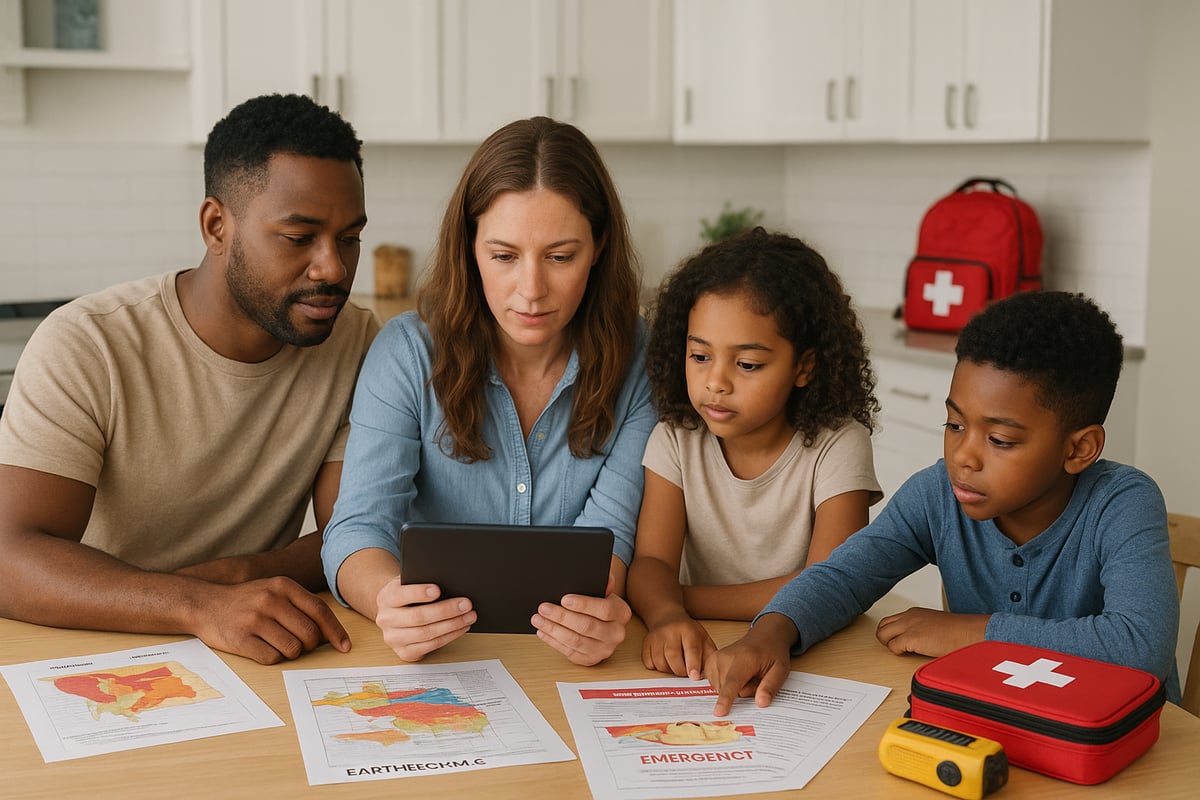
Identifying Likely Emergencies in Your Area
Start by researching the most common threats in your location. Do you live near a coastline, fault line, or floodplain? Each area has its own set of hazards, from hurricanes and tornadoes to earthquakes and wildfires. Local government websites often provide hazard maps and risk assessments tailored to your community.
For example, coastal residents must prioritize hurricane readiness, while those in the Midwest focus on tornado safety. Reviewing recent events in your region can guide your in case of emergency planning. For a deeper dive into local risks and preparedness strategies, see the Emergency Preparedness Plan Guide.
Evaluating Household Vulnerabilities
Next, take a close look at your home and household members. The age, structure, and location of your house can affect how it withstands disasters. Assess whether your home has features like smoke detectors, fire extinguishers, and secure windows.
Consider the needs of everyone in your household. Children, elderly relatives, pets, and individuals with disabilities may require additional support in case of emergency. Make a list of specific vulnerabilities, such as limited mobility or medical dependencies, and address them in your plan.
Reviewing Workplace and School Risks
Emergencies can occur when you are away from home, so familiarize yourself with the emergency protocols at your workplace and your children's schools. Know the evacuation routes, communication systems, and shelter-in-place procedures.
Many institutions conduct regular drills to ensure readiness. Recent trends show an increase in school lockdowns and safety exercises, reinforcing the importance of knowing what to do in case of emergency. Review these plans with your family so everyone knows what to expect and how to stay connected.
Digital and Cybersecurity Risks
Today's risks extend beyond physical threats. Cyberattacks, data breaches, and identity theft can disrupt essential services and compromise sensitive information. Protect your digital assets by using strong passwords, enabling two-factor authentication, and backing up critical data.
In case of emergency, ensure you have secure access to important documents and backup plans for digital communications. The 2024 ransomware attack on municipal services is a stark reminder of how digital vulnerabilities can impact daily life and emergency response.
Gathering Community Resources and Contacts
No one faces emergencies alone. Identify local resources such as emergency numbers, community shelters, medical centers, and support organizations. Sign up for local alert systems to receive real-time updates during a crisis.
Engage with neighborhood safety programs and build relationships with nearby residents. Having a list of contacts and resources ensures you can access help quickly in case of emergency. Community connections often make the difference between a fast, coordinated response and unnecessary delays.
Step 2: Create a Comprehensive Emergency Plan
A robust emergency plan is the cornerstone of true readiness. In case of emergency, knowing your next steps and having a clear plan can make all the difference. Let us break down each element you need to cover to protect your family and assets.
Developing a Family Communication Plan
Communication is critical in case of emergency. Start by designating an out-of-area contact who can serve as a central point for updates if local lines are down. Make sure every family member has this contact's details memorized or stored in their phones.
Discuss and document how you will reach each other if separated. Practice sending group messages and using phone emergency features. Set up ICE (In Case of Emergency) contacts on each family member’s mobile device, so first responders can quickly access important information.
Review your plan regularly, especially after changes in school, work, or travel routines. Clear communication reduces confusion and ensures everyone knows what to do in case of emergency.
Establishing Evacuation and Shelter-in-Place Procedures
Every emergency plan must include both evacuation and shelter-in-place strategies. Map out primary and alternate evacuation routes from your home, workplace, and children’s schools. Practice these routes together to build familiarity and confidence.
Identify local shelters and safe rooms for different scenarios, such as severe storms or chemical hazards. Assign meeting points outside your neighborhood in case local access is restricted.
Schedule family drills to rehearse both evacuation and shelter-in-place. In case of emergency, these rehearsals help everyone react quickly and calmly, minimizing panic.
Preparing for Medical Emergencies
Medical readiness is vital in case of emergency. Gather and document all allergies, medications, and key health information for each family member. Store this data on medical cards in wallets and as digital files on smartphones.
Consider using medical ID bracelets for those with chronic conditions. Teach everyone the basics of first aid and CPR, and keep a first aid kit accessible.
Create a quick-reference table to keep essential health details organized:
|
Name |
Allergies |
Medications |
Medical Conditions |
Emergency Contact |
|---|---|---|---|---|
|
John |
Penicillin |
Lisinopril |
Hypertension |
(555) 123-4567 |
|
Emily |
None |
Albuterol |
Asthma |
(555) 234-5678 |
Update this information frequently to ensure accuracy in case of emergency.
Safeguarding Important Documents and Information
Protecting your vital records is necessary in case of emergency. Make physical and digital copies of IDs, insurance policies, wills, and family contacts. Store originals in a fireproof safe, and upload encrypted copies to a secure digital vault.
Consider how your loved ones could access these documents if you are unavailable. For a comprehensive approach, review In Case of Emergency Document Access to ensure your family can retrieve critical files quickly when needed.
Maintain a checklist of essential documents and update your storage solutions as your needs evolve. Secure access means you are prepared for any situation in case of emergency.
Planning for Pets and Special Needs
An inclusive plan covers every member of your household. In case of emergency, arrange transportation and shelter for pets, and prepare a pet emergency kit containing food, medication, and comfort items.
Tailor your plan for family members with disabilities or chronic illnesses. Identify accessible shelters and transportation, and ensure necessary medical devices and supplies are included in your go-bags.
Communicate your plan with caregivers and neighbors who may assist. Preparation for all unique needs increases safety and peace of mind in case of emergency.
Integrating Technology and Emergency Alerts
Technology can be a lifesaver in case of emergency. Register for local and federal alert systems, and install emergency notification apps such as FEMA or Red Cross on all family devices.
Set up community notification platforms to receive updates on weather, civil alerts, or health emergencies. Customize your alert settings for the risks most relevant to your area.
Regularly update your devices and apps to ensure you receive timely, accurate information in case of emergency. This proactive approach keeps everyone informed and ready to act.
Regular Review and Practice of Your Plan
A plan is only effective if it is up to date and well-practiced. Schedule annual or biannual family drills to rehearse your response in case of emergency. Adapt your plan as your family grows or your circumstances change.
Use checklists to review contact lists, evacuation routes, and emergency supplies. Practiced families are statistically more likely to respond efficiently and safely.
Encourage open discussion about your plan, so every family member feels confident about their role in case of emergency.
Safely Storing Emergency Documents with Digital Vaults
Secure document storage is essential in case of emergency. Digital family vaults offer a way to protect vital records like wills, insurance policies, and health directives with zero-knowledge encryption.
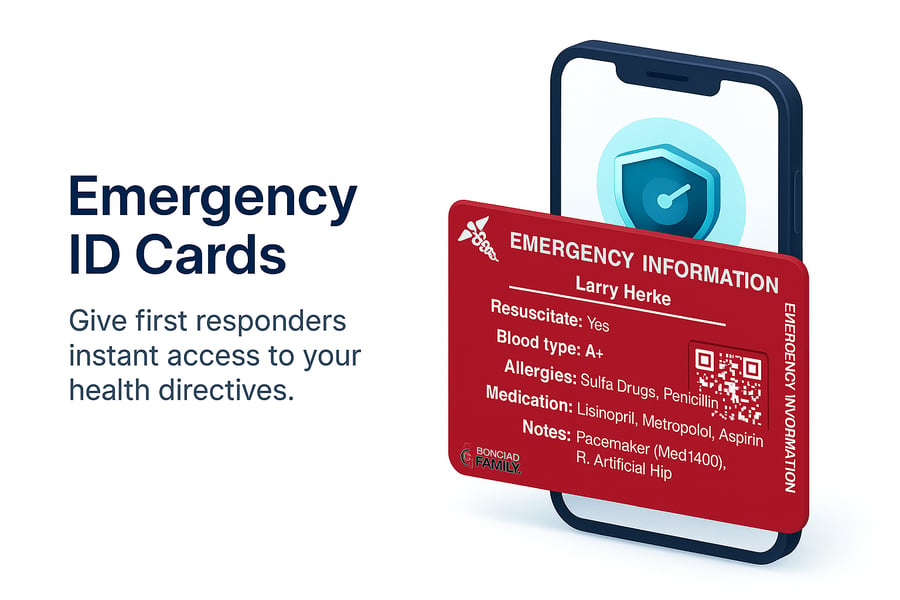
Customize access permissions so trusted contacts can retrieve what they need during a crisis. Automatic delivery features ensure your loved ones receive necessary documents if you are incapacitated. After a disaster, families with digital vaults can access vital information quickly, minimizing stress and delays.
With patented, secure solutions, you can organize and deliver critical documents when they are needed most in case of emergency.
Step 3: Assemble and Maintain Emergency Supplies
When preparing in case of emergency, the right supplies can make all the difference. A well-stocked emergency kit supports safety and comfort during any crisis. This step focuses on assembling, organizing, and maintaining essential items for your family’s unique needs.
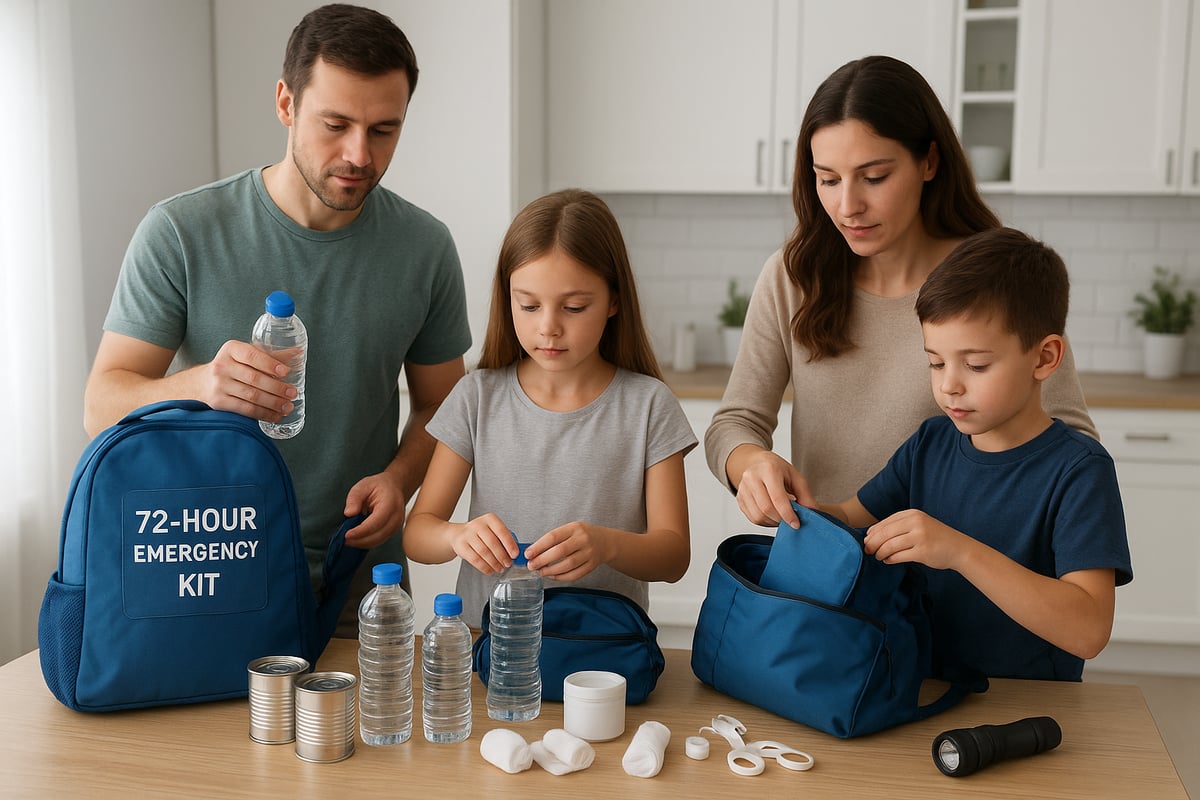
Building a 72-Hour Emergency Kit
A 72-hour emergency kit is the foundation of readiness in case of emergency. This kit should provide every family member with basic necessities to survive for three days. Include at least one gallon of water per person per day, non-perishable food, a flashlight, batteries, a first aid kit, cash, and multi-purpose tools.
Customize your kit for your household. Add baby formula, pet food, or specialty foods as needed. Store your kit in an easy-to-carry container and keep it in a readily accessible location. For a comprehensive guide, explore Family Preparedness and Survival Kits, which details essential items and tips for assembling the perfect kit in case of emergency.
Creating Go-Bags for Quick Evacuation
Go-bags are portable emergency backpacks designed for quick evacuation in case of emergency. Each family member should have a personal go-bag with essentials such as water, snacks, a flashlight, a whistle, a change of clothes, and copies of important documents.
Consider unique needs, like medications or comfort items for children. For pets, pack food, leashes, and vaccination records. Place go-bags by the main exit and review their contents regularly. This preparation ensures you can leave home swiftly and safely in case of emergency.
Stockpiling Long-Term Supplies
Beyond basic kits, stockpile long-term supplies to stay self-sufficient in case of emergency. Store non-perishable foods, water purification tablets, and backup power sources like solar chargers or generators. Aim for at least two weeks’ worth of food and water if possible.
Rotate stock regularly to maintain freshness. Include items like manual can openers, extra blankets, and hygiene products. Being prepared with long-term supplies reduces stress and increases resilience in case of emergency, particularly during extended disruptions.
Maintaining and Updating Supplies Regularly
Supplies must be maintained and updated to remain effective in case of emergency. Create a checklist for monthly or quarterly reviews. Replace expired food, water, batteries, and medications. Update kits seasonally, adding blankets for winter or sunscreen for summer.
Families who check their kits regularly are more likely to have what they need when it counts. According to FEMA, 60 percent of emergency kits are missing key items if not checked often. Consistent maintenance ensures your family is ready in case of emergency at any time.
Special Considerations: Medications and Medical Devices
For those who rely on medications or medical devices, planning in case of emergency is critical. Keep extra prescriptions, backup medical equipment, and written instructions in your kits. Store spare batteries and chargers for devices like CPAP machines or insulin pumps.
Maintain a current list of all medications and dosages for each family member. Include copies of prescriptions and doctor contact information. Addressing these medical needs ensures everyone’s health and safety in case of emergency, no matter the circumstances.
Step 4: Leverage Technology and Communication Tools
Modern emergencies demand more than just supplies and plans. Leveraging technology can make the difference between chaos and control. The right digital tools streamline communication, deliver vital alerts, and safeguard your information, ensuring you are ready in case of emergency.
Setting Up ICE (In Case of Emergency) Contacts
One of the simplest, most powerful steps is programming ICE (in case of emergency) contacts into each family member’s smartphone. This ensures that first responders or bystanders can quickly notify your loved ones if you are unable to communicate.
- Add ICE contacts in your phone’s emergency settings.
- Use medical ID features to display critical health info.
- Ensure ICE details are accessible without unlocking your device.
Families should review and update these contacts regularly. In case of emergency, having accurate, accessible information can speed up medical care and reunite families faster.
Using Emergency Apps and Alert Systems
Staying informed is critical in case of emergency. Download top-rated emergency apps like FEMA, Red Cross, and local government alert systems. These apps provide real-time notifications for weather, civil, and health incidents.
- Customize alerts for hazards in your area.
- Enable geo-targeted notifications for timely updates.
- Practice using these apps to familiarize your family.
According to National Preparedness Month 2025, using official alert systems increases your chance of receiving life-saving information during disasters. Make sure everyone in your household knows how to access and respond to alerts.
Protecting Digital Assets and Personal Data
Digital security is essential in case of emergency. Back up important files and contacts to both cloud and physical devices. Use encrypted storage and password managers to protect sensitive information from cyber threats.
- Update passwords regularly and use two-factor authentication.
- Store digital copies of key documents in secure apps.
- Test access to backups before an emergency occurs.
Cyberattacks can disrupt access to emergency resources. Proactive digital protection ensures you can retrieve critical data exactly when you need it in case of emergency.
Staying Connected During Power Outages
Power outages can disrupt communication when you need it most. Prepare with fully charged portable power banks, solar chargers, and hand-crank radios. These tools help you stay connected in case of emergency, even if the grid is down.
- Keep backup chargers in your emergency kit.
- Practice using radios and alternative charging methods.
- Plan regular check-ins with family and neighbors during outages.
Clear communication is vital to coordinate help and share updates. Reliable power solutions ensure your devices are ready in case of emergency, keeping your family informed and connected.
Step 5: Ensure Family and Community Readiness
Preparing your family and community is the final, crucial step in case of emergency. Effective readiness goes beyond supplies and plans. It is about education, connection, practice, and active involvement, ensuring everyone is equipped to respond and support one another when it counts most.
Educating Family Members of All Ages
Education is the foundation of preparedness in case of emergency. Every family member, from young children to seniors, should know what to do if disaster strikes. Start by teaching children how to dial emergency numbers, recognize alarms, and follow safety instructions. Teens can learn basic first aid, CPR, and how to communicate during a crisis. For older adults, discuss evacuation options and medication management.
Consider using age-appropriate resources, such as illustrated guides for kids or checklists for adults. Encourage questions and repeat lessons regularly to reinforce knowledge. When everyone understands their role, your family becomes more resilient in case of emergency.
Building Neighborhood Support Networks
Community connections can make all the difference in case of emergency. Building relationships with neighbors allows for shared resources, mutual support, and faster response times. Organize neighborhood meetings to discuss local risks, such as flash floods or power outages. Share contact information and create a check-in system for those who may need extra help.
Utilize tools like the 2025 Flash Floods Data Tools to assess your area's specific vulnerabilities and plan as a community. By working together, you strengthen your collective ability to respond in case of emergency and recover more quickly.
Practicing Emergency Drills Together
Practice is essential to ensure your plans work in case of emergency. Schedule regular drills at home—review evacuation routes, meeting points, and communication procedures. Involve children in role-playing scenarios, such as fire or severe weather drills, to build confidence and reduce anxiety. Invite neighbors to participate in community-wide exercises for broader impact.
After each drill, discuss what went well and identify any areas for improvement. Practiced households respond up to 30 percent faster during real crises. Consistent rehearsal ensures everyone knows their responsibilities and can act quickly in case of emergency.
Volunteering and Community Involvement
Active participation in local preparedness initiatives increases your community's resilience in case of emergency. Join organizations such as the Red Cross or Community Emergency Response Teams (CERT) for training and volunteer opportunities. Attend disaster simulations to gain hands-on experience and network with local responders.
Stay informed about available support and recovery programs, such as those detailed in the FEMA Recovery Update September 2025. Your involvement helps build a culture of readiness and ensures vital resources and knowledge are available when needed most in case of emergency.
Now that you understand how crucial it is to be ready for any emergency in 2025, it’s time to take real action to protect what matters most. With IronClad Family, you can securely organize your essential documents, emergency contacts, and vital plans—all in one place, accessible when you and your loved ones need them most. Imagine the peace of mind knowing your family’s safety and future are well protected, no matter what comes your way. Take the first step toward comprehensive preparedness and try it for yourself—Start 14-Day Free Trial.

Sahar Lester
Sahar Lester is the Founder and CEO of IronClad Family, a company dedicated to helping families and businesses safeguard their most valuable assets through secure digital vaults. With a master’s degree in Security Technologies from the University of Minnesota and experience spanning cybersecurity, leadership, and international commerce, Sahar bridges the gap between innovation and protection. She also serves as an adjunct professor at Metropolitan State University, mentoring the next generation of cybersecurity professionals.

